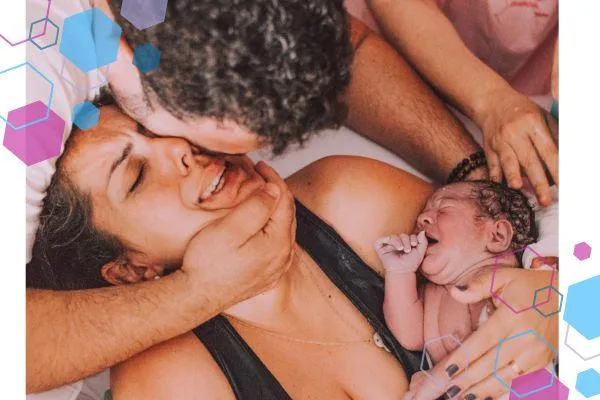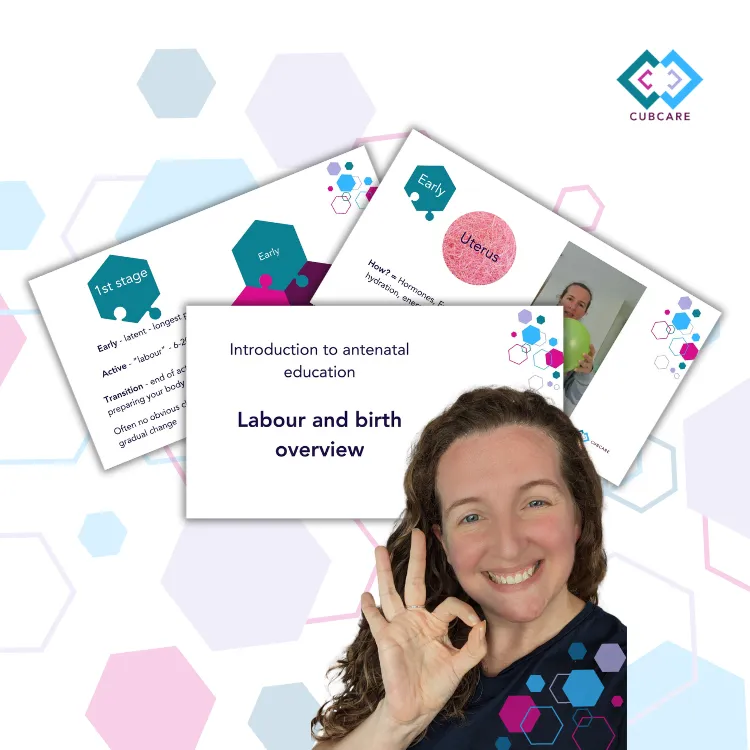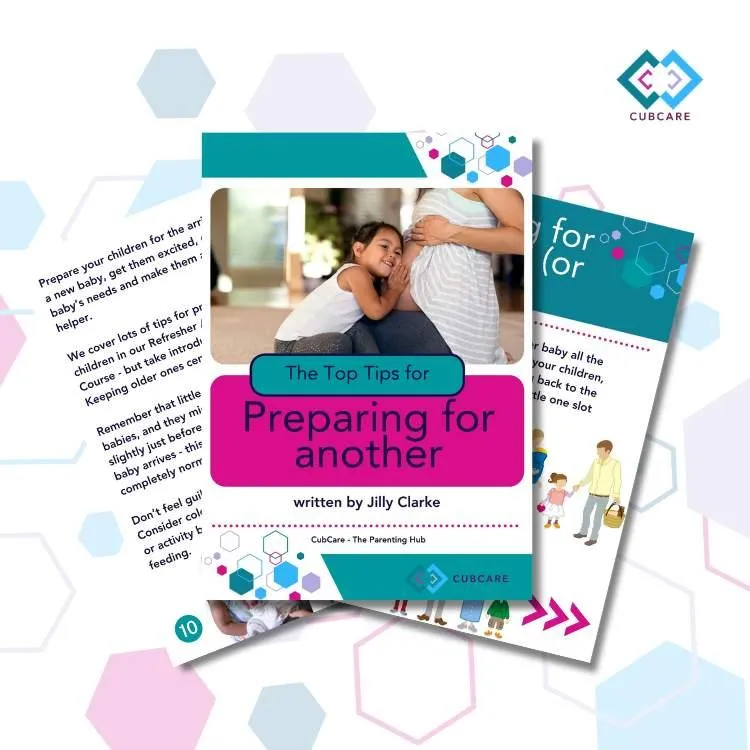We're an award winning Antenatal and Postnatal Education Platform 2025!
(read more here)
CubCare blogs.
From early pregnancy to newborn development.
Advice to help through pregnancy, birth and childhood.
BLOG

Giving Birth with Hypermobility: What to Expect & Prepare
"Hypermobility Spectrum Disorder/hEDS isn’t a weakness. It’s just a different way of being in your body. And when you understand how to work with it, pregnancy and birth can be positive and powerful." - Jilly Clarke
If you’re preparing to give birth and have Hypermobility Spectrum Disorder (HSD) or hypermobile Ehlers-Danlos Syndrome (hEDS), you may already be navigating fatigue, instability, or autonomic symptoms that others don’t fully understand.
And when it comes to birth, the uncertainty can double:
Will labour take longer—or happen too quickly?
Will my body cope with pain and pressure?
Can I still move freely during labour?
How will dysautonomia impact birth and recovery?
This blog explores what birth can look like in a hypermobile body—what the research shows, what standard care often misses, and how you can prepare with clarity, confidence and support.
If you're looking for some guidance about navigating pregnancy with hypermobility then check out our Pregnancy with Hypermobility blog to go alongside this blog.
What the evidence tells us about birth outcomes with HSD/hEDS
In 2023, a landmark study by Pearce, Bell, and Pezaro analysed 1,338 pregnancies from 947 people with hEDS/HSD—the largest dataset of its kind to date.
This study matters. Not because it pathologises hypermobile bodies; but because it makes visible what many people already know: that our experiences aren’t being fully recognised in standard maternity care.
Complications can arise, yes. But the risk is amplified when people aren’t given individualised support or informed about what to expect.
In a maternity system that is more medicalised than ever, it can be dangerous for hypermobile people to give birth in. This isn't because of our bodies, but because the system isn't set up for the population, let alone a set of people with more complex needs.

Labour length: why many hypermobile people birth quickly
One recurring theme in both the 2023 survey and previous research is precipitate labour - defined as active labour lasting under three hours.
Why does this happen?
Tissue laxity may allow the cervix to dilate more efficiently
Pelvic mobility can create more space for baby to descend
Some hypermobile people experience stronger contractions earlier, especially when upright and active
This doesn’t mean everyone with HSD/hEDS will birth quickly. Sometimes the earlier part of labour can be longer, on a par with the main population. But it’s important to prepare for the possibility of a fast birth, especially if you’ve already experienced a fast labour with a pervious pregnancy or live far from your birth location.
If you're planning a home or midwife-led birth, this is particularly relevant as things can ramp up as you enter active labour. Discussing your history and creating a responsive birth plan can help ensure safety and reduce panic if things move quickly.

Complications and considerations when giving birth with hypermobility (HSD or hEDS): what you need to know
While many hypermobile people go on to have uncomplicated births, several important risks are noted in clinical research, including:
Tearing or soft tissue injury due to collagen differences
Joint dislocation or instability, especially during forced or unsupported positions
Again, the solution is not fear - it’s preparation. When you know what problems may occur, it can be simple solutions to make things easier.
This is where personalised care, continuity, and education make the biggest impact.
Can you have an active birth with hypermobility? Yes - and it’s often a better idea that alternatives!
Active birth isn’t just possible with hypermobility, it’s actually often more comfortable and physiologically appropriate.
Why?
Movement supports joint comfort and prevents overextension from static positions
Upright or forward-leaning positions reduce pressure on the lower back and sacrum
Water birth adds buoyancy and temperature regulation—ideal for dysautonomia and joint strain
Changing position regularly can reduce the chance of prolonged second stage (pushing)
It's worth noting that stirrups, semi-recumbent positions, and lithotomy are poorly tolerated by many with HSD/hEDS due to hip and SI joint instability. In other words, the medically managed birth image can often be damaging to hypermobile bodies.
Your birth plan should clearly state:
Your particular joint vulnerabilities and what positions to avoid
Your preferred labour positions (e.g. supported kneeling, sidelying, water immersion)
Options for partner-supported movement or props
Requests for regular check-ins around joint strain and sensation

Pain management, hypnobirthing and the nervous system
Many people with HSD/hEDS report increased pain sensitivity and sensory overload in labour. For some, pain can be sudden and intense, even at early stages. Others experience difficulties with certain medications or anaesthetic response.
This is where hypnobirthing and nervous system-based techniques are powerful—not just as coping tools, but as a form of physiological regulation.
“Hypnobirthing-based supportive care significantly reduced labour anxiety, discomfort, and duration.”
— Yaqoob et al., 2024
Breath-led techniques help:
Stabilise heart rate and blood pressure
Reduce adrenaline (which can spike dysautonomia)
Stimulate oxytocin and vagus nerve activation for calm
Prevent panic spirals or fight-flight symptoms
The 2024 scoping review by Pezaro et al. also highlights the value of combining movement, breath, and partner support for birth in hypermobile bodies (Pezaro et al., 2024).
How to prepare and communicate your needs as someone with hypermobility, preparing to birth
Your birth team may not be familiar with HSD/hEDS—so specific, simple communication is key.
In your notes or birth plan, include:
“I have a connective tissue condition (HSD/hEDS) that affects my joints, healing, and nervous system.”
“I’m at risk of joint instability and do best in forward-leaning, supported positions.”
“I may be more sensitive to pain or medications. Please keep communication clear and check in often.”
"In some cases, local anaesthetics are less effective on me."
“I use breathwork and hypnobirthing techniques to regulate during labour—please help protect my space and focus.”
A birth partner, doula, or close friend who understands this and can advocate on your behalf is invaluable.
Your body is not a problem - your body, your way
Your birth doesn’t have to fit the system’s default template. And having HSD or hEDS doesn’t mean you’ll need intervention or control - it means you’ll need support that reflects your unique physiology.
You may birth quickly.
You may need more time.
You may need to move in different ways.
And you may need a plan that includes nervous system regulation alongside birth positioning.
Whatever it looks like, your body is capable.
And when you understand what it needs, that capability shines through.
My Pregnancy and Birth with Hypermobility course is built to give you more than just reassurance. It offers real, practical tools for planning, pacing, and recovering in a hypermobile body.
Inside, we cover:
Birth positions that protect your joints and use your strengths
Strategies for managing pain, fatigue and dysautonomia in labour
How to advocate confidently in medical settings
Postnatal recovery guidance designed for connective tissue conditions
🔗 Explore the course and enrol here
Because “you’re fine” is not the same as being supported.
And you deserve more than reassurance—you deserve a plan that works.
You don’t need to do this alone.
And you never were meant to.
Refresher Antenatal Course in person
Refresher Antenatal Course online
Birth Partner course (included in our Antenatal course)
Antenatal Course in person
Antenatal Course online
Easily navigate to our most popular Blog categories
Download our Freebies

Labour and Birth
Watch our introduction to antenatal education webinar, our labour and birth overview - to start your antenatal education journey. Understanding the process, and what you can do to influence it.

Pregnancy Planner
Free Pregnancy Planner to help you prepare for a little one. Prepare your body, your mind, your finances and your home. Get organised, feel good and prepare for an active, positive birth.

Birth Partner Guide
Your ultimate guide to being the best birth partner during pregnancy, birth and recovery. Learn what you need to do, and what you need to learn to be the best birth partner possible.

Expecting Again Guide
Your ultimate guide to preparing for another birth and an extra baby. Our top tips for navigating pregnancy and birth, and helping your older ones to transition into their new role as a big sibling.
Based in Welwyn Hatfield, offering local pregnancy support and doula services across Hertfordshire: St Albans, Hatfield, Welwyn Garden City, Potters Bar, Stevenage, Harpenden, Hitchin, Barnet, Mill Hill and surrounding areas.
Online antenatal and postnatal education available UK-wide.
© Copyright 2025 CubCare The Parenting Hub. CubCare is operated by The Birth and Baby Company Ltd. Company No. 15655287
Privacy Policy | Terms & Conditions | Medical Disclaimer | Inclusivity and Accessibility

